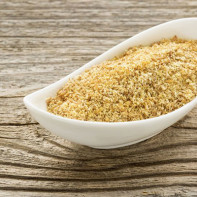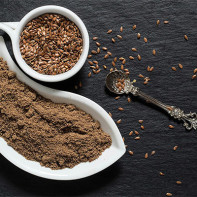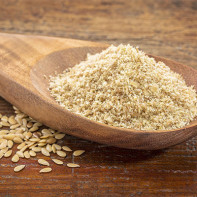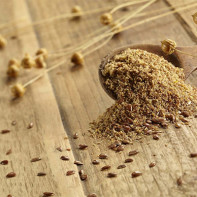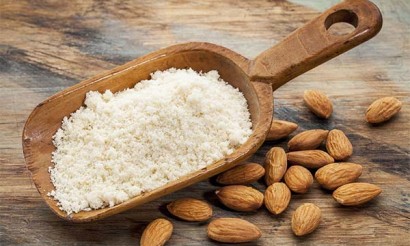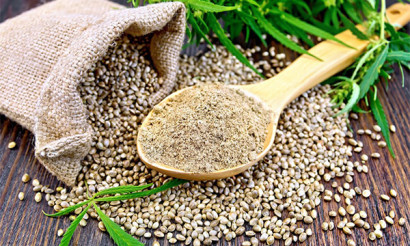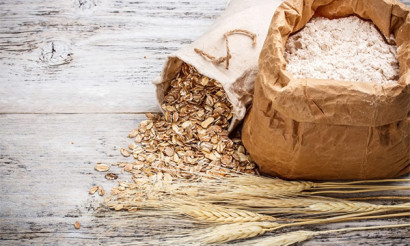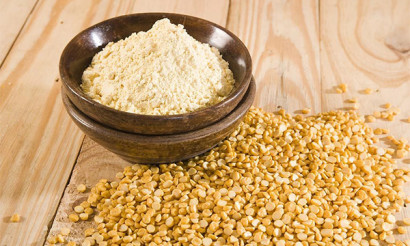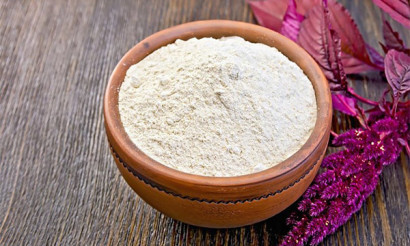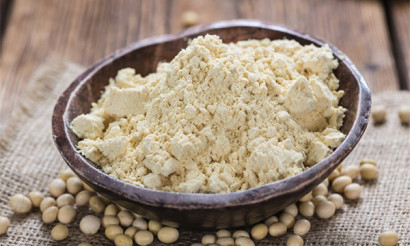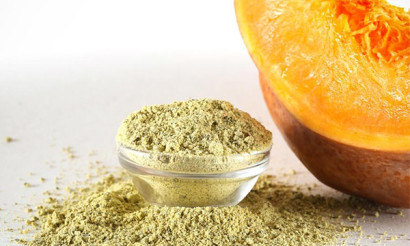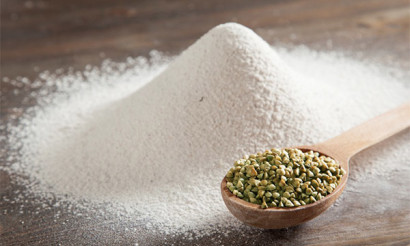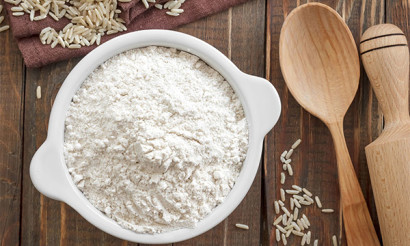Flax meal: useful properties and contraindications
Flax has been known to people since ancient times. Its beautiful blue flowers are sung in songs and have long been the decoration of flowerbeds and household plots. But not everyone knows about the useful properties of this wonderful plant.
- Composition and calories
- What is the usefulness of flax meal
- General benefits
- For Women
- For Men
- For Pregnancy
- Breastfeeding
- For children
- How to take flaxseed meal for weight loss
- Flaxseed meal in medicine
- Diabetes mellitus
- In pancreatitis
- For gastritis
- For bowel cleansing
- For constipation
- Curative means on the basis of flax meal
- Flax meal in cosmetology
- Face Masks
- Hair Masks
- Harm and Contraindications
- What can be made of flax flour: Recipes
- Bread
- Pancakes
- Pancakes
- Cookies
- Kissel
- Scones
- Cupcakes
- How to Make Flax Flour at Home
- How to Choose and Store Flax Flour
- Interesting Facts about Flax Flour
Flax is not only famous for its beauty. For several thousand years this plant has been providing people with a long strong fiber, which has been used for centuries to make eco-friendly fabric and sew clothing, especially in peasant circles, and to weave ropes.
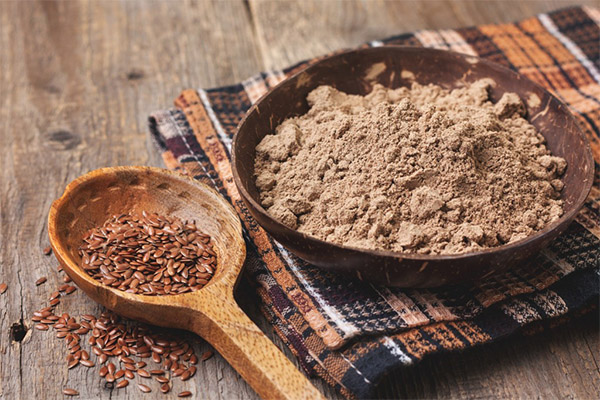
No less valuable product has always remained flax seeds, from which useful oil was extracted and flour was made. There were two types of flour: from fresh whole seeds and from the cake left after the oil was pressed. Both types of flour differed from each other in their properties and composition. Flour made from cake was considered healthier. It did not contain oil, so it could be stored much longer than whole-wheat flour.
Composition and calories
Linseed meal is usually made from the seeds after oil extraction. It is a dry yellowish powder of fine grinding that can be stored for several months.
The caloric value of such a product is much lower than that of any flour made from cereal grains. Per 100 grams of seeds there are from 270 to 305 kcal, depending on the method of production (the amount of oil left in the product). The glycemic index of flour is 35 units.
Energy value (average values):
- fats - 10 g;
- protein - 36 to 48 g;
- Carbohydrates - 10 g.
The mineral composition of flax seeds is also quite rich:
- calcium;
- potassium;
- sodium;
- iron;
- chromium;
- phosphorus;
- zinc;
- magnesium;
- copper;
- selenium;
- manganese.
The seeds contain vitamins A, C, B1, B2, B3, B4, B5, B6, B9, E, K. In addition, the product contains essential fatty acids omega-3 and omega-6, plant proteins, lignans (phytoestrogens), fiber, antibacterial and antifungal components.
The composition of amino acids in flax meal proteins is close to dietary soy protein and is a valuable food product.
If we talk about whole flax seed flour, the caloric value will be much higher - 534 kcal per 100 grams of product. This is due to the high content of flax oil in the product.
Its energy value looks different already:
- fats - 42 g;
- proteins - 19 g;
- carbohydrates - 30 g.
This product looks like coarsely ground groats with a moist consistency. It can be stored only in the refrigerator, and no more than three days, as the vegetable oil it contains quickly begins to enter into oxidative reactions and becomes rancid. It is best to prepare such flour just before use.
What is flax meal good for?
General benefits
Flax seed flour was undeservedly banished from our diet. Gradually, this miracle product regains its position. This is not surprising, since it has many health benefits. Its daily use with food can significantly improve health and even help to cure a number of diseases.
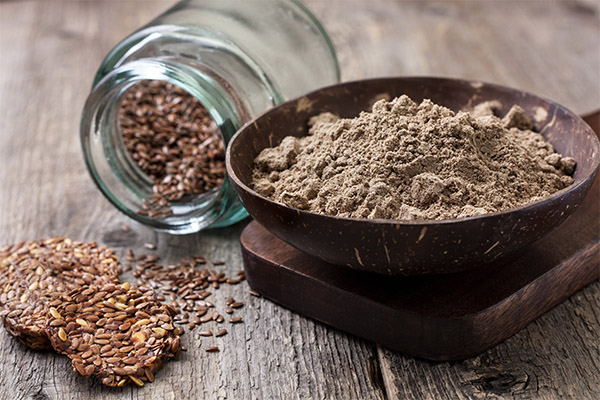
It is only necessary to remember that flax meal is a food supplement, not an independent product. It can bring benefit only when regularly consumed in small quantities. For example, it should not be used as a substitute for ordinary cereal flour, but only a part of it.
Plant proteins in flax flour, as already mentioned, have dietary properties and are perfectly assimilated by the body. It is important to note that there is no gluten in flax flour, so the product is not allergenic.
Flaxseed meal is a proven remedy for upper respiratory tract infections, and it will also help in getting rid of coughs.
The dietary fiber in the product perfectly "sweeps" all harmful deposits from the walls of the intestine.
B vitamins normalize metabolism and stabilize the nervous system, help effectively fight stress, insomnia, chronic fatigue.
Lignans and vitamin E, acting as antioxidants, prevent cancer.
Potassium, magnesium and amino acids strengthen the heart muscle and blood vessel walls, normalize blood pressure, preventing atherosclerosis and varicose veins. There is a thinning of the blood, it lowers cholesterol. Therefore, the product is recommended for high blood clotting. There is an increase in blood flow to the brain, improves memory.
Polyunsaturated fatty acids affect the regeneration of cells in the body, promoting their repair and excretion of breakdown products. This is especially true for liver cells. This increases the outflow of bile, which is an excellent prevention of cholelithiasis.
The presence of vitamins A and E has a positive effect on the skin and hair. Smoothed fine lines, tightened the weakened skin, inflammation disappears. Hair gets luster and volume, strengthened roots.
Flaxseed meal is useful for almost everyone, regardless of age and gender. However, you can highlight certain properties of this product, which will prove useful in specific situations.
For women
As already mentioned, flax seeds are rich in lignans - phytoestrogens. The right balance of estrogens in the body is necessary for a woman throughout her life, and their deficiency can lead to disorders of the whole body.
Phytoestrogens help to normalize monthly cycles and improve well-being during critical days. Flaxseed contains iron, which maintains normal hemoglobin levels that decrease during natural blood loss. The same factor helps women recover faster after childbirth or reproductive surgery. In addition, lignans protect the female body from cancerous tumors.
During hormonal restructuring, many young girls experience discomfort and anxiety, which is also due to a lack of estrogen. Replenish their supply is quite able to flax product.
During menopause phytoestrogens can provide an invaluable service to a woman. Regular consumption of flax meal reduces the intensity of hot flashes and sweating, and also has a positive effect on the psycho-emotional state, relieves anxiety and uncertainty.
Phytoestrogens help to maintain an appropriate level of fertility spouses. This fact is important when planning to conceive a healthy child.
For men
Thanks to the antimicrobial properties of flax meal perfectly prevents prostatitis and other inflammatory diseases in men.
As a result of improved blood flow and improved blood quality, natural testosterone production is produced. This, in turn, stabilizes the emotional state of the man, relieves anxiety and tension. Normalization of testosterone improves the condition of muscles and bones, regulates the production of the optimal number of sperm cells and increases potency.
Although estrogens are considered "female" hormones, they are also vital to the male body and are even produced in small quantities. They are involved in strengthening bones, normalizing blood glucose levels, stimulating cerebral circulation, and protecting against the development of cancerous tumors. Therefore, the statement that female hormones can harm the male body is untenable.
Pregnancy
During pregnancy, the use of flax meal as one of the components of a healthy diet will also be very beneficial for the mother and the future baby. The product allows you to successfully stop early toxicosis. The rich set of trace elements and vitamins allows the mother's body to compensate for their increased consumption, normalizing the psycho-emotional background and having a general health-improving effect.
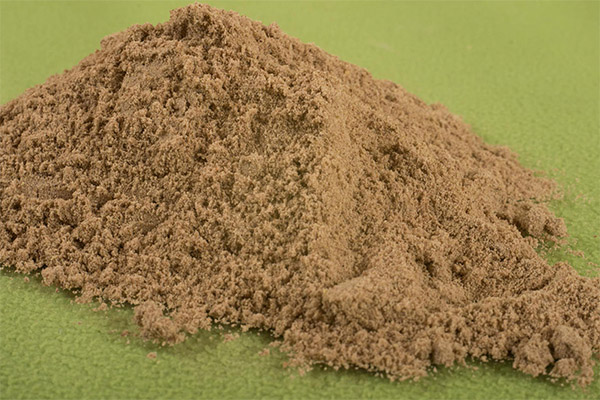
The laxative effect of flax will bring tangible benefits in the second half of pregnancy as a means of preventing constipation. When the fetus actively increases in size, it squeezes the mother's intestines harder and harder, which often leads to retention of feces. The laxative effect of flax will be timely here.
For the unborn child, the components of flax meal will also be very useful. Observations during studies on the effect of flaxseed consumed by the expectant mother on the development of the fetus have shown that the child began to develop its brain more quickly. After birth, such babies were more active in learning and faster assimilation of new information.
Important! One should remember about lignans contained in flax seeds, which, in fact, are phytoestrogens. If during pregnancy there is a threat of miscarriage, then the expectant mother flaxseed meal is contraindicated, in order not to disrupt the already fragile hormonal balance.
When breastfeeding
When breastfeeding, linseed meal has a positive effect on lactation, improving the composition and quality of mother's milk and making it more nutritious. By receiving this milk, the baby will grow up healthier and stronger.
Flax meal after childbirth helps a woman to recover quickly and improve immunity, get rid of microinflammations. There is a normalization of sleep and reduced risk of stress. All this, in turn, increases the volume and quality of lactation.
However, a young mother should remember that only a natural product is useful, and best of all, freshly prepared. Therefore, it is better to refuse pharmacy supplements containing flax meal, and use the product in its pure form.
It is best to substitute some of the grain flour with flax flour when baking. You can take this healing product in the form of kissel or porridge. When heating flaxseed and its products useful substances are practically not destroyed, so you can safely use it in hot dishes.
Nevertheless, with all the positive aspects of using flaxseed meal during the period of breastfeeding the baby may show individual intolerance to the components of the product, which he will receive with breast milk. Therefore, the mother should very carefully monitor the child's digestion. If he appears diarrhea, then the reception of flax meal should be immediately stopped.
For children.
Although there are no published centralized clinical studies on the effect of flaxseed on the body of the child, yet this product has few contraindications. It is allowed to give it to children in the form of decoction or kissel, 10 drops, starting from 6 months. From one to three years, the dose is increased to 0.5 tsp. From 3 to 7 years old children can already consume decoction or kissel by 1 tsp, and after 7 years - by 1 tbsp.
In addition to the fact that flax meal enriches children's bodies with a whole complex of vitamins and trace elements, the indication for use can also be specific problems:
- Acute respiratory infections and coughs;
- Arthritis or other inflammations;
- cardiovascular diseases;
- allergies;
- constipation and flatulence, dysbacteriosis;
- skin diseases;
- immunodeficiency after a long illness.
Important! Always remember: before the treatment or the introduction of flax meal in the regular diet of the baby should check the individual tolerance of the product. If the child's health deteriorates, you should immediately refuse to use it.
Do not include the product in the diet of children suffering from cholelithiasis, hepatitis or intestinal obstruction, as well as during treatment with hormones and antidepressants.
How to take flax meal for weight loss
Only fat-free flour should be used as a dietary product for fighting excess weight. It contains a high concentration of vegetable protein, which makes up almost half of the product. Its processing by the body requires serious energy expenditure. This leads to a greater expenditure of the body's potential energy, and to its subsequent replenishment from its own fat reserves.
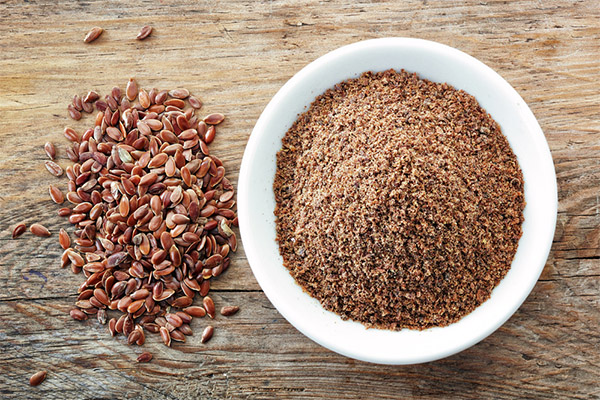
Dietary fiber in the product, which helps to clean the intestines from accumulated toxins, also contributes to weight loss. The cleansed intestines work better, normalized metabolic processes, the body is gradually freed from fluid stagnation at the cellular level. Due to this occurs stabilization of fluid and salt balance and weight loss.
Another useful property of dietary fiber is the ability to absorb water in the intestines. By swelling, fiber imitates the filling of the intestines with food, which contributes to a feeling of fullness and reduces appetite. A person becomes satiated with a small amount of food if flaxseed meal is present.
Omega-3 and omega-6 fatty acids help regulate lipid metabolism and better digest food.
As mentioned, flax seed flour is one of the lowest calorie flours. Therefore, replacing other types of flour with it will lead to a reduction in the caloric content of dishes. It can be added to porridges, sauces, soups, used as a breading, to replace part of the basic flour in baking, and also used as a base for sour cream. Flax flour, especially made from roasted seeds, has a pleasant nutty flavor and can enrich any dish in which it is included as an ingredient.
It is usually recommended to mix flax meal with low-fat fermented dairy products: kefir, yogurt, sour cream. Such smoothies can be eaten both in the morning and in the evening. In the evening, they are especially recommended for those who have an awakened night appetite: a little flax meal for dinner will cause a long-lasting feeling of satiety.
Despite the positive effect of flax meal in getting rid of excess weight, you should not forget about a balanced diet and the ban on overeating. Healing flour will help to lose weight faster, but only if you approach this issue comprehensively and responsibly.
Flaxseed meal in medicine
As a medicine, flax seeds and flax products have been used by humans since the time of Hippocrates.
Flax products are most widely used to cleanse the body of toxins, "bad" cholesterol and parasites. Flax treatment is also effective for various inflammations and infections. Thanks to this remedy restores mucous membranes, improves skin condition, leaves pimples and pustules, strengthens hair. Flaxseed is also used as a mild laxative and antibacterial agent.
However, flaxseed meal can also provide substantial assistance in the treatment of specific diseases.
In case of diabetes mellitus.
Flax flour has a low glycemic index (35). This makes it a product that is approved for consumption by people with diabetes.
But it is not just an approved food product. When used correctly, it can successfully fight the formidable disease. The fact is that, despite the presence of carbohydrates in its composition, flaxseed is able to influence the body's own insulin production. This happens due to the restoration of beta cells of the pancreas, responsible for this process.
This fact alone makes the product mandatory for consumption even by healthy people to prevent type 2 diabetes. If you already have type 2 diabetes, the inclusion of flax meal in your menu can prevent its transition to the more severe type 1.
In addition, the components of flax flour successfully fight inflammation in the body and help strengthen the immune system. In general, this also has a positive effect on the genitourinary system. With diabetes this factor is especially important, because the increased glucose content in the urine and reduced immunity creates a favorable environment for the reproduction of bacteria in the urinary organs. Suppression of growth of fungi and bacteria will not allow foci of inflammation to develop and will not lead to complications.
Cholesterol level in blood is reduced, lipid metabolism is normalized. It is not without reason that endocrinologists in the second type of diabetes try to start treatment not with medications, but with foods that stimulate the production of your own insulin. Flaxseed meal is just one of these products.
Important! When including flax meal in the diet to combat diabetes, despite all the benefits of the product, you can not forget about the strict dosage, which is best chosen together with the attending physician. If you exceed the dose, then instead of a cure, you can get serious harm.
In pancreatitis
Flaxseed meal in pancreatitis can both significantly alleviate the disease and aggravate it. Do not rely on flaxseed products as a panacea. Therefore, the decision to include flax meal in the complex therapy against pancreatitis can only be made together with your gastroenterologist, who will determine the dose and method of intake. Usually flax meal is prescribed as part of a dietary diet.
The effectiveness of treating pancreatitis with flaxseed is confirmed by numerous studies. The enveloping effect of flax allows to localize the foci of inflammation and slow down cell division in them. As a result, the diseased organ gets a respite and time to recover. Such localization inhibits even the development of cancerous tumors.
Anti-inflammatory factor causes suppression of pathogenic microbes and suppression of inflammation foci. Regenerating properties cause restoration of pancreatic cells and normalization of the organ.
Since the pancreas is an integral part of the gastrointestinal tract, it should be treated in conjunction with other organs. Curing only one organ does not guarantee normal operation of the digestive system as a whole. Therefore, the use of beneficial factors of flax meal for pancreatitis extends to the treatment of the gastrointestinal tract as a whole.
So, if stones or at least sand are diagnosed in the gallbladder or kidneys, it is not necessary to start treatment with flaxseed products. Shifting stones with the movement of bile can lead to blockage of the bile ducts and severe pain. Flaxseed meal should not be taken in acute pancreatitis because the product causes bile to move. Taking flaxseed increases water intake, which can also cause kidney and bladder stones to move.
With gastritis
With gastritis, flax seed flour is also shown as part of the complex therapy. Its enveloping effect allows you to protect the inflamed mucosa of the stomach from toxins, excess acid and mechanical trauma. The anti-inflammatory properties allow to gently influence the inflamed tissues and to start the process of their recovery. Intake of flax meal has a complex effect on all organs of the digestive tract, as a result of which pain in the stomach is reduced and the condition of the patient is improved.
Flax meal can be used for the treatment of the following types of pathology:
- gastritis with increased acidity;
- Atrophic and hypoacid gastritis;
- erosive gastritis;
- chronic gastritis.
Important! Along with the treatment with flax meal, you can not forget about following a gentle diet and taking anti-inflammatory drugs prescribed by the doctor.
For colon cleansing
The presence in the product of a large amount of plant dietary fiber has a positive effect on the peristalsis of the intestine, gently massaging it. In addition, dietary fiber is an excellent sorbent, which collects toxins and waste products deposited on the walls of the intestine. They absorb excess water and cholesterol, which is then removed.
The product has an enveloping properties due to the mucus in its composition and helps to repair minor damage to the mucous membranes of the digestive tract.
With constipation.
The mild laxative effect of flax meal helps to soften stools and leads to the elimination of constipation and flatulence.
This property is especially relevant after childbirth or open surgery, when the patient is contraindicated to strain the abdominal wall.
Antimicrobial substances inhibit pathogenic microflora in the intestines, thus promoting the reproduction of beneficial microflora. Normalization of the intestine leads to normal digestion and metabolism.
Remedies based on linseed flour
Today a lot of pharmacological preparations of different effects are produced from linseeds: analgesic, enveloping, expectorant, laxative, healing, choleretic, antisclerotic. In pure form, linseeds and products from them are also widely used.
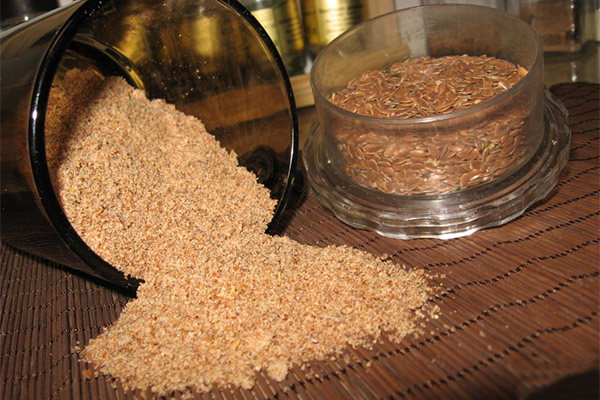
Treatment on the basis of flax meal can be carried out both including it in the composition of various dishes, and using it in its natural form, mixed with any fermented milk product or even pure water.
The product has few contraindications, but the risk of individual intolerance still remains. Therefore, the first time you should start with a small dose, gradually increasing it in the absence of health deterioration.
If the flour is made at home, you should keep in mind its short shelf life and increased caloric content, without abusing a large amount of the product. In addition, it is better to be examined by doctors and make sure that there are no urolithiasis and cholelithiasis, in which flax products are not recommended.
- For colon cleansing. One tbsp. kefir or yogurt with 1 tbsp. flax meal can replace breakfast. Within 2 weeks you should drink this mixture on an empty stomach in the morning. Then during the day you should drink at least 2 liters of water to avoid dehydration.
- In the treatment of gastritis. Boil 1 tbsp. flaxseed flour with a glass of boiling water, and then simmer over low heat until the kissel, stirring continuously. Take cooled kissel 3 times a day before meals on 1 tbsp. spoon. The course - at least three weeks.
- In the treatment of pancreatitis. By 1 tbsp. flaxseed meal add 1 tbsp. boiling water, cover and insist an hour. Then the infusion is divided into 3 parts and drink 3 times a day before meals. The course - at least 20 days.
- In the treatment of diabetes. To 100 g of flaxseed meal add 100 ml of boiling water and insist 1 hour covered under a lid. The resulting mixture for two months to take daily before a meal, 3 times a day, 1 tbsp.
Flax meal in cosmetology
Flax meal can be used in foods and masks as a skin care product for the face. Its anti-inflammatory, tightening, regenerating, cleansing, nourishing and moisturizing properties in interaction with the skin improve its condition.
Flax masks are also useful for strengthening hair.
Flax meal face masks
Flax masks are useful at any age and with any type of skin. But experts especially recommend using them for aging skin, as well as with increased dryness and peeling.
Flaxseed is hypoallergenic, but you should always remember about the individual intolerance of its components. Therefore, before applying on the face it is advisable to test the tolerance of the mask on the skin at the elbow for 10-15 minutes.
The mask should be applied to cleansed skin, preferably in the evening. The duration of the mask is up to 25 minutes. Remove it with warm or cool water. The effect is better secured with a nourishing cream.
Carry out such procedures at least twice a week, then the skin will always look firm and well-groomed.
For problem skin prone to inflammation (acne, pimples, acne)
- water - 100 ml;
- chamomile - 1 tsp;
- flax meal.
Boil chamomile with boiling water, let the infusion rest for half an hour. Then strain the infusion and combine with flax meal. The flour mixture should be thick enough to get a pasty consistency. Apply the cooled mask on your face. Then it is better to lie in a relaxed state. The mask has a cleansing and light tightening effect.
Another anti-inflammatory mask: Mix 4 tablespoons of flax meal with a tablespoon of chamomile. Pour the mixture with boiling water, achieving the consistency of a pulp. Then this mask is applied to the steamed skin, covered with cling film and a napkin with cut-outs. The duration of the mask - 20 minutes. Remove the mask with warm water.
For problem skin a mask made of a mixture of sour cream and linseed flour taken equally is effective. Apply such a mask should only be applied to steamed skin for 20 minutes. Afterwards, wash your face with warm camomile infusion.
For rejuvenation
- linseed flour - 2 tablespoons;
- warm water - 2 tbsp;
- mashed wheat germ - 1 tbsp;
- Natural honey - 1 tbsp.
Combine wheat germ and linseed flour. Add honey and a little water to get a creamy mass. Apply the mixture to the skin and let it dry.
For dry, flaky skin
- olive oil - 0,5 tbsp;
- warm water - 2-3 tbsp;
- flax flour - 1 tbsp;
- natural honey - 0,5 tsp.
Mix the flax flour with water and let it swell for 10 minutes. Then add honey and olive oil. Apply the mask to the skin and cover with a napkin.
To nourish the skin
If you add to the previous recipe 1 ampoule of pharmacy vitamin A, you will get a mask for nourishing any type of skin.
To nourish and moisturize
- natural honey - 1 tbsp;
- egg yolk - 1 pc;
- linseed flour - 3 tbsp;
- banana - 0,5 tbsp;
- Almond oil - 1 tbsp.
Thoroughly mash the flax meal and half a banana. Honey, butter and egg yolk should also be grated together. Then combine both mixtures and mix thoroughly, then apply to the face.
To refresh and lighten the skin
- water - 100 ml;
- lemon juice - 1 tsp;
- linden blossom - 2 tbsp;
- linseed flour - 1 tbsp.
Lime blossom brew boiling water, steep for 30 minutes. After straining it, add the flour and insist for another 15 minutes to let the flour swell. Then add the lemon juice. Clean the face beforehand and apply the mask. After 25 minutes, rinse your face with cool water.
Hair Masks
Flax seeds will also have a positive effect on the hair, if it is dry, brittle and weakened by coloring.
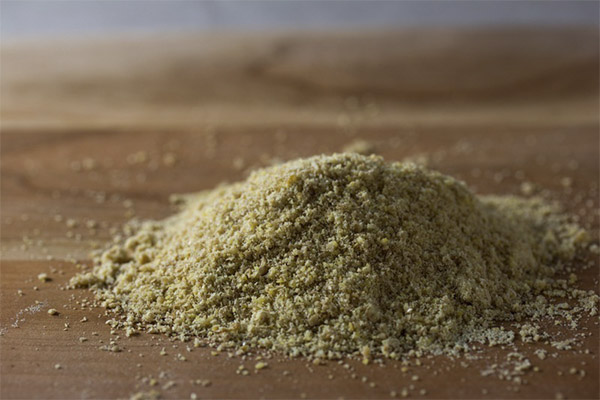
Kefir-based mask
- flax meal - 2 tablespoons;
- kefir - 100 ml;
- lavender oil - 3-4 drops.
Dilute flour with kefir. The mixture must resemble sour cream. If it will be too thin - add some more flour. Then add the lavender oil and mix thoroughly. It is better to apply the mask to "dirty" hair with a brush. Such a mask tends to soap and can be an excellent substitute for shampoo. To get the nourishing effect the mask should be kept on the hair for at least 20 minutes.
A mask based on chamomile broth
- chamomile - 1 tbsp;
- cold water - 100 ml;
- linseed flour.
Pour chamomile in boiling water, insist 40 minutes. Then strain the infusion and add flax meal. There are no hard proportions here, the mixture should have a creamy consistency. Apply to "dirty" hair, keeping the mask on it for up to 20 minutes.
Hair styling product
- water - 400 ml;
- linseed flour (or whole flax seeds) - 1 tsp.
Pour flax meal or seeds into cold water, boil and boil for 10 minutes, then cool without lid. Pour the cooled broth into a suitable container and use it for hair styling. If you take twice as much linseed, you get an excellent natural gel for hair styling.
Health Hazards and Contraindications
Flaxseed products with all their positive properties can also bring harm to the body. The first condition for the use of this product is its freshness. Quality flour will have a nutty taste and smell, without any signs of bitterness. Otherwise flaxseed meal is prohibited for use!
Side effects such as flatulence, diarrhea, nausea, dizziness and headaches can occur if the product is overdosed. If in addition you do not drink enough fluids, you may become dehydrated, because the product contains a lot of fiber, which absorbs water intensively.
Flaxseed products are categorically prohibited in the following cases:
- Individual intolerance (allergy):
- cholelithiasis.
There is no unambiguous scientifically confirmed opinion on the harm of cyanides present in flax seed. Proponents of one opinion believe that their presence makes the product dangerous to health if you exceed the authorized dosages. Their opponents argue that the amount of cyanide in flaxseed is so small that it is incapable of causing the human body any serious poisoning. And even more, the human body itself produces cyanide in negligible amounts.
However that may be, but flax seeds and flax products must be consumed without exceeding the recommended norms.
What you can make with flax meal: recipes
Since flax flour contains fewer carbohydrates and fats than wheat or rye flour, dishes with a partial replacement of wheat flour with flax flour will also be less caloric and more healthy. The most important thing is not to add more flax flour than the recipe calls for, and to observe the proportions.
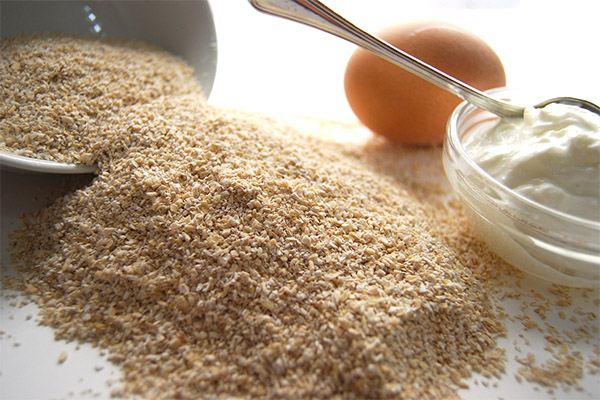
Bread
- wheat flour - 300 gr;
- flax flour - 100 gr;
- dry yeast - 1,5 tsp;
- water (or whey) - 250 ml;
- vegetable oil (any) - 1 tbsp;
- salt - 1 tsp;
- sugar - 1 tsp.
In warm water or whey stir yeast, sugar and salt. Then add a little more than half a cup of wheat flour and put it in the heat. When the dough has risen well, add the vegetable oil, flaxseed flour and the rest of the wheat flour. Knead the dough well so that it comes off the palms of your hands and the walls of the bowl. Then place the dough in a greased mould, sprinkled with flour. Then place the dough in a warm place. When the dough has increased in volume by 1.5 times, place in an oven preheated to 200°C. Bake the first 15 minutes at 200°C, then reduce the temperature to 150°C for another 15 minutes. Check the readiness of the bread by piercing it with a dry, clean stick. If the stick stays dry - the bread is ready. Take it out of the oven, shake it out of the molds and cover with a towel (or better two) to cool.
Pancakes
- vegetable oil (any) - 1-2 tbsp;
- milk (kefir, whey) - 450 ml;
- eggs - 3-4 units;
- linseed flour - 50 gr;
- wheat flour - 150 gr;
- salt - 0,5 tsp;
- sugar - 1 tsp;
- 0.5 tsp. soda (put out with vinegar).
Beat the eggs into a foam with salt and sugar. Add a quarter of the milk (kefir, whey). Add both types of flour and knead a fairly thick dough without lumps. When the dough is thoroughly kneaded, add the remaining milk in batches, mixing each time until homogeneous. With this kneading, the pancake batter will be homogeneous, without lumps. Bake linseed pancakes as usual in a heated pan.
Flax pancakes
Flax pancakes are very easy to make, even beginners can cope with it. You can take the recipe for pancakes (above) as a basis, reducing the amount of liquid in it. Grated fruit and vegetables and even minced meat can be added to the fritter batter. The dough for the pancakes should be about the consistency of sour cream. Fry the pancakes in hot vegetable oil, laying the batter on the pan with a portioned spoon.
Cookies
- milk or water - 0,5 tbsp;
- Flaxseed flour - ¾ tbsp;
- wheat flour - 1 tbsp;
- sugar (honey, maple syrup) - 2 tbsp;
- vegetable oil (any) - 4 tbsp;
- salt - 0,5 tsp;
- flax seeds - 6 tbsp.
Mix, salt, sugar and milk, then add the vegetable oil. Mix the flour (wheat and flaxseeds), add the baking soda and roasted flax seeds. Pour the mixture of salt, sugar, butter and milk, knead an elastic dough. Wrap it in clingfilm and let it rest for 20 minutes. Sprinkle a table with flour and roll out the dough 5mm-8mm thick, cut out the dough with a cookie cutter or small glass. Bake in a preheated oven at 160°C for 10-12 minutes. Ready cookies should be golden and crispy.
Kissel
- linseed flour - 1 tbsp;
- honey - to taste;
- water - 0,5 l.
Mix the flour with water and on a medium heat bring to a boil. After that, cool under a lid and add honey.
Scones
- sugar - 0,5 tbsp;
- salt - 0,5 tsp;
- wheat flour - 1 tbsp;
- linseed flour - 0,5 tbsp;
- kefir - 1 tbsp;
- baking soda - ¼ tsp;
- roasted flax seeds or sesame seeds - for sprinkles.
Mix the baking soda with the kefir and leave for 20 minutes to carbonize. Then add salt, sugar, and wheat and flax flours. Knead the dough and cover it with clingfilm for 30 minutes. Then with flour-soaked hands divide the dough into 6 parts and form thin dough balls. The edges should be thicker than the middle. Place the flatbread on greased parchment paper and sprinkle the top with linseed or sesame seeds. If the top of the tortilla is dry and the seeds do not stick to it, you can grease the tortilla with water before sprinkling. Bake in a hot oven at 180°C. Take the finished tortillas off the sheet and cover with a towel until they cool.
Cupcakes
Chocolate cake with apple:
- Wheat flour - ¾ tbsp;
- flax flour - 1/3 tbsp;
- cocoa powder - ¼ tbsp;
- egg - 1 pc;
- vegetable (or butter) oil - 50 ml;
- milk - 250 ml;
- apple - 1 pc;
- soda - ½ tsp;
- sugar - 100 gr;
- salt - ½ tsp.
Mix wheat and linseed flour, cocoa powder, salt, baking soda, sugar. Separately mix the egg, milk and butter. If you use butter, you need to let it melt until soft, but do not melt. Then you need to combine the loose and milk-oil mixture and knead the dough. It will be quite soft. Divide the dough into pieces and put into molds. Add 2-3 little apple slices to each tin and bake in a hot oven for 20 minutes at 180°C.
Cake with cottage cheese
- Wheat flour - 100 gr;
- flax flour - 50 gr;
- starch - 40 gr;
- eggs - 3 units;
- butter (margarine) - 200 gr;
- cottage cheese - 200-250 gr;
- salt - 1 tsp;
- soda - ¾ tsp.
Melt the butter until soft (do not heat!), beat the cottage cheese, beat the eggs with sugar into a thick foam. Separately, mix together the linseed and wheat flour, baking soda, salt and sugar. Combine all the ingredients and knead the dough. When it is ready, place it in the molds in the form of balls. Bake in a hot oven, first at 200°C for 10 minutes and then at 170-180°C for another 10-15 minutes. Sprinkle the finished muffins with powdered sugar.
How to make flax flour at home
You can make flax flour at home only from whole grains. Home technology does not allow you to first squeeze the oil from the seeds and then grind them into flour. Therefore, it should be remembered that, due to the presence of vegetable oil in the composition, the flour cooked at home can not be stored for more than three days, and only in the refrigerator.

In earlier times, flax grains were ground in mortars or in small mills, sifting the resulting flour through a sieve. Nowadays you can use a more advanced method of grinding and use a powerful coffee grinder or blender. The rest of the technology remains the same: sift the ground seed through a sieve, and send the remaining coarse particles back into the grinder. The ready flour should be packed in a cardboard box or paper bag and sent to the refrigerator or used immediately.
How to choose and store flax meal
Today you can buy flax seed flour quite freely. It is sold in large supermarkets in health food departments, as well as in pharmacies. It is surprising that such a useful product has a fairly low cost.
Usually the packaging of non-fat flax meal indicates a shelf life of 6 months. If a longer period is indicated, it indicates the presence of preservatives in the product, it is better to give it up.
The quality indicator can be the marking on the package of international standard "ISO". It is also necessary to read carefully the composition of products that claim to contain flaxseed meal. Manufacturers sometimes replace it with other flour components or add to the flour itself various impurities in the form of sugar, flavorings or preservatives. A product with such additives can no longer be considered completely natural, so the benefits of it will be small.
Flax meal is sold in various packages. It is best to choose a vacuum pack, this will give a guarantee that the flour was not in contact with air oxygen until it was opened. The color of the flour should be even, homogeneous, the consistency - uniformly crumbly. After opening the package, the product can be stored in the refrigerator for no more than a month.
Interesting facts about flax flour
Flax comes in different varieties. Long-fibre flax provides more fiber, while the seeds are quite scarce. Flax-kudryash (oilseed flax), on the contrary, gives less fiber and a lot of seeds. Mezheumok flax yields both fiber and seed. Wild flax is also found in nature. But it is not widespread in culture because its seeds ripen unevenly and are difficult to collect.
Flax comes in two varieties: white and black (golden and brown). White seeds contain an increased amount of antioxidants and lignans, which makes them even more useful. However, white flax is much harder to find than brown flax.
But regardless of the variety or type of seed, flax is still a healthy dietary product.
«Important: All information on this site is provided for informational purposes only for your own health. Consult a flaxseed specialist before applying any recommendations. health care professional before using any of the recommendations. Neither the editors nor the authors shall be liable for any possible harm caused by materials."

